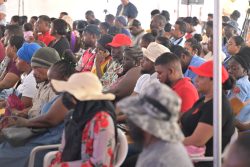On entering the village of Meten-Meer-Zorg one encounters a series of canals, a reflection of the grid-like order imposed upon the coastal landscape by the drainage patterns of the sugar plantation.
The community which was founded in 1871, like many coastal settlements, has its origins in the production of sugar. During that time, the population of the village was approximately 739 people. Actually, Meeten-Meer-Zorg is still not that big. It has a population of 2000 people, which is fairly modest by the standard of many coastal villages. However, it is a lot busier than many of the other coastal communities.
Situated in Region Three on the West Coast of Demerara Meten-Meer-Zorg is approximately 14 miles from Georgetown. The village comprises two main parts: a housing scheme and a squatting settlement. These are sub-divided into six sections: Ocean Garden, Chatters Land, East Meten-Meer-Zorg, Prem Nagar, Railway View (the squatting area) and West Meten-Meer-Zorg.
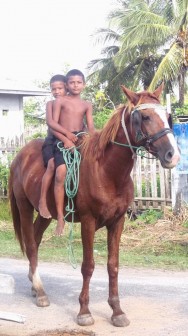 Catering for villagers’ needs are a health centre, two pharmacies, two nursery schools, a primary school, a private school and the Professional Learning College (PLC). In terms of commerce there is a butcher’s shop, two Chinese restaurants, a taxi service and a supermarket, as well as a number of small family-operated shops.
Catering for villagers’ needs are a health centre, two pharmacies, two nursery schools, a primary school, a private school and the Professional Learning College (PLC). In terms of commerce there is a butcher’s shop, two Chinese restaurants, a taxi service and a supermarket, as well as a number of small family-operated shops.
Many of the residents describe the area as being developed because, they say, it has been transformed over the years.
On a visit to the community Sunday Stabroek received a warm welcome from Rajdai Baijinauth, who has been living there for over 30 years. She related how in the old days many of the residents caught the train from Meten-Meer-Zorg to Vreed-en-Hoop. She explained that ‘Railway View’ got its name because the train route went through there.
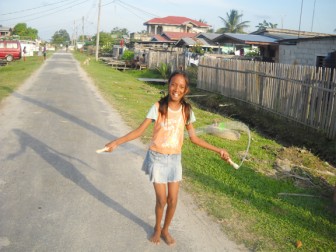
“Girl I remember them day…you coulda hear de train from a far distance… Every time it passing de driver used to toot de horn…How I miss them memories, but these days you left with no choice than to catch de bus,” she said. Baijinauth, is a grandmother who enjoys spending time with her grandson. She described him as the joy of her life, and said that in the afternoons she would take him along the street for an evening stroll.
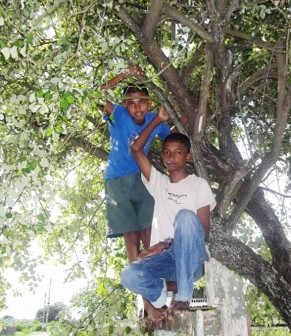
Rondal Latchman, who has been living in the village for quite a long time said that he had been a cane-cutter at the Leonora Estate, however he has now resigned. Sitting on his bench reflecting down memory lane he too gave praise for the development of the village. “I used to had to fetch water from till in front of de road to wash meh clothes and so… but thanks that times has really changed, I don’t have to worry about lighting meh candle or meh lamp to get light; I have electricity and everything that meh need.”
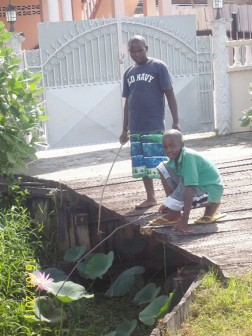
He was introduced to the village by his brother who lives there, he said, explaining that during the holidays he used to visit and was impressed by the place. “When I used to come here I always tell meh brother that I have to get meh piece of land to live here… now today me and meh family living together happily in meh house that I build here in Meten-Meer-Zorg.”
Most of the residents said that the Leonora Estate used to be the employer in the community; however, nowadays most people are employed at the nearby Uitvlugt Estate. Selling wood, cattle rearing, poultry rearing and tailoring also provide a means for some residents to make a living.
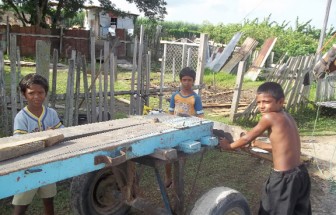
Guyana Heritage Museum
When seeking a weekend getaway people visit the Guyana Heritage Museum, or ‘Kastev Museum,’ which is one of the treasured landmarks in the community.
Gary and Shaimoon Serrao have been living in the Meten-Meer-Zorg community for the past 18 years. As the owners of the Guyana Heritage Museum, they explained that it
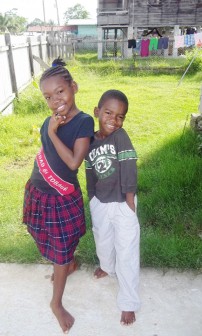
had been established as a dedication to the ancestors. “The museum is a way of saying thank you to the past. As Guyanese people if we are ashamed of where we came from then we are saying that we are ashamed of our ancestors,” Serrao said. He added that the museum which was set up in 1994 was a way of showing our love and respect for the route we have taken. “We must connect to our past,” he continued; “if your teacher is passionate about travelling abroad then it is likely that the students would become passionate about that too. However if the teacher is passionate about travelling to the museum, then the students would desire to travel to the museum as well.”
He praised the students and teachers of Linden who have been visiting the museum for the past few years. “We have students who visit the museum from far but, those close by sometimes do not make any effort to experience the thrilling culture and heritage that the
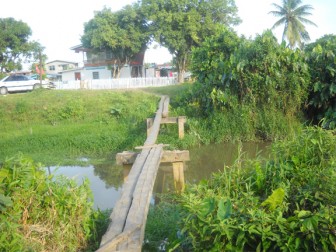
landmark has to offer.” Gary said that he is very happy to be living in the village although he spent most of his life living in the city. “If I am in Russia I am always proud to say that I am from Guyana and even more overwhelmed to say that I live in Meten-Meer-Zorg” he told Sunday Stabroek. On the down side he highlighted the garbage which is dumped in the canals. “If you love your country you should not litter, because it is a form of disrespect to one‘s homeland,” he said.
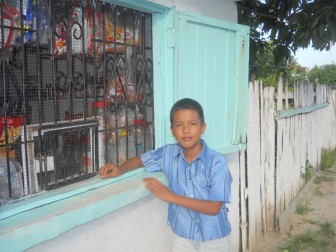
His wife also said that she enjoys living in the village. According to her, the community is a very diverse place because there are so many pieces to it. Sharon clarified that the museum is referred to by some villagers as the “The Kastev Museum,” because many years ago Kastev was a co-op community in the area. She noted that one of the things she likes most about the place is the peace and the contentment of the villagers: “People living in Meten-Meer-Zorg are very simple and contented people, but yet they live a comfortable life.” She
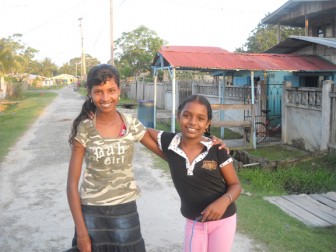
mentioned the Atlantic breeze as being one of the things that she takes pleasure in after a long and sometimes hectic day. “The breeze delivers a feeling of happiness… where I am living I experience the fullness of the cool breeze.”
One of the residents was in agreement with this, and related that she visits the museum because she enjoys the breathtaking view of the Atlantic Ocean from the top of the building.
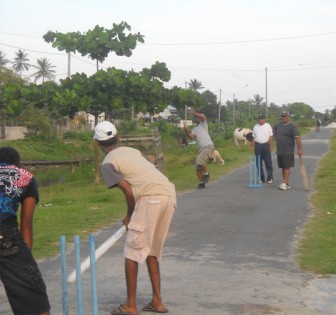
“The museum is one of the best things found here… Girl, every time I go there I climb the steps until I reach the top of the building; the breeze and especially the scenery would always be a picture that I would remember.” The resident said that more of the youths should get involved and visit the museum because it would help them to become “more educated about their past“ and “teach them where they came from.“
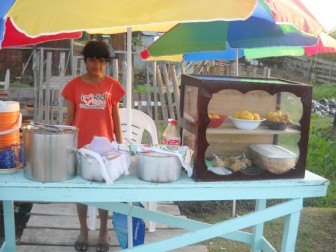
On the downside of life in Meten-Meer-Zorg, residents complained about poor drainage and bad roads at various locations. A few others said that because of the design of some of the drains and roads in their area they still experienced some flooding when it rained, especially those residents who live in Railway View. “This is a dry weather place, when it rains very hard de whole house does get flood out… one time I find a snake in meh house when we de get flood,” a resident complained.
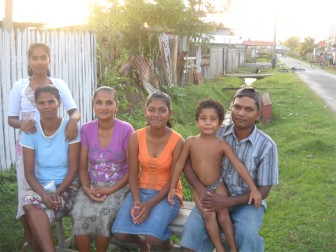
Drug use and selling by some elements in the community was also noted. “Behind here is where they call the drug houses [pointing to a few small wooden houses hidden aback of Railway View]; everybody, even the big ones does come and pick-up deh thing behind here,” a resident said.
Some of the young people, however, raised concerns about the fact that there is no skills training centre for the drop-out youths and for those who were not fortunate enough to get a sound secondary education.
Noise nuisance was also noted as an issue among the villagers. “I am awakened by the roosters and the loud music that meh neighbour does play,” one man said. “De does put on de latest Kartel and Mavado song and if you see how de lil children them does dance… they know de word so good.” He went on to say, “Girl meh gonna tell you de truth: here aint get nothing good; de lil ones them does play big before then time… it have one girl who getting a set of pickney and does lef them to roam de streets and beg fu food.”
Rashed Mohmamad Baksh, a father of nine on the other hand, exclaimed that he is very happy to be living in Meten-Meer-Zorg. According to him he loves the community because he was born and raised there. “I love the people here… they are very kind and helpful; if you get a problem you can always get an assistance.” He added that he enjoys sitting on his veranda at night relaxing in the cool Atlantic breeze. “After a long day at work I would lie in my hammock an mediate; sometimes I even admire the stars in the sky.”
He also highlighted that the Meten-Meer-Zorg cinema was a feature attraction of the village. He explained that this is the only community that housed a cinema. “On the weekends I used to visit the cinemas, I used to get excited whenever the movie playing on the big screen… these are memories that I will forever cherish.”
According to him Meten-Meer-Zorg like any other village has its negatives, but nevertheless it is one of the best places on the West Coast of Demerara.







